We come from the land of the ice and snow,
Immigrant Song, Led Zeppelin
From the midnight sun, where the hot springs flow.
Led Zeppelin only ever played Iceland once, but we’ve just returned from our third tour. I wish I could say it was due to public demand, but it was actually to do some running and try once more to see the northern lights. Ticking off Zeppelin’s list, we didn’t get any midnight sun but certainly saw plenty of ice, snow and hot springs.
Regular readers will remember how gutted I was to find that there was no lava in Hawai’i when we visited, so I was quite excited about the unexpected eruption of Fagradalsfjall in March. It’s the first volcanic activity on the Reykjanes peninsula for around 800 years. Equally unexpected was the volcano’s decision to have a sleep eight hours before our flight landed, switching off all lava production and shutting down indefinitely. We therefore started with a lap of the peninsula instead, heading first to Krísuvíkurberg cliffs. These were down a 3 km gravel track, with the only other vehicle being a (im)mobile home being towed out of a muddy patch which was definitely not a parking space.

© Haydn Williams 2021

© Haydn Williams 2021

© Haydn Williams 2021
From there it was a short hop to Krýsuvík geothermal area, where steam and hot water spew out of the ground at various points. We climbed the ridge above, and were rewarded with great views.

© Haydn Williams 2021
The next morning we jumped on an internal flight to Ísafjörður in the Westfjordlands region. Situated in the north-west of the country, it looked to have stunning scenery and plenty of opportunity for walking/running. We landed in rain but that didn’t make the surroundings any less impressive.

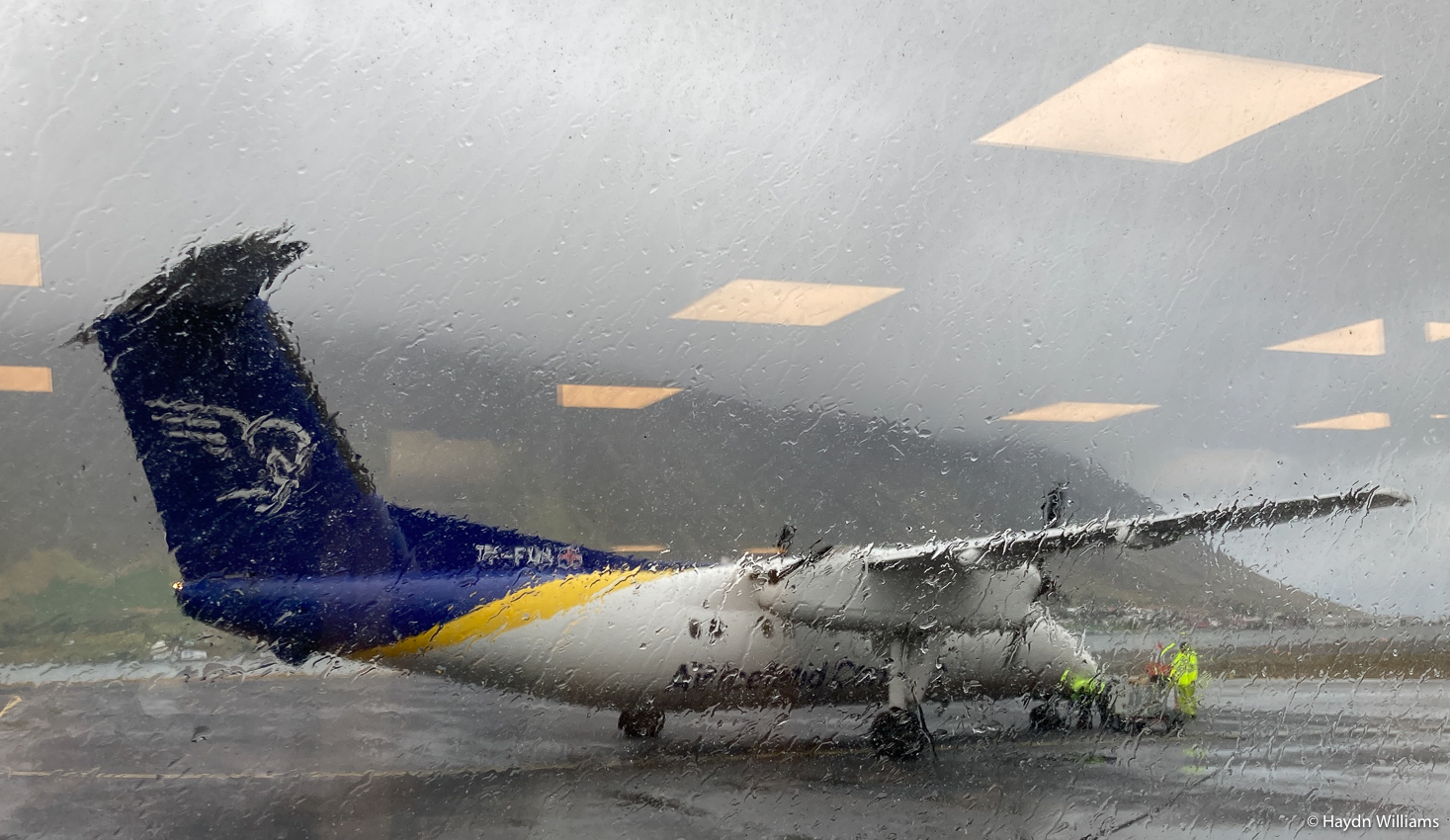
© Haydn Williams 2021
The hire car was collected immediately, and we wasted no time in heading south to Dynjandi waterfall through lengthy tunnels, over bridges and causeways, and finally along a few kilometres of unpaved road. Like all things in Iceland, the waterfall is sufficiently huge that it’s hard to do it justice in photos. This lead to the first utterance of a subsequently well-used phrase: “It’s all just too big to photograph”.

© Haydn Williams 2021

© Haydn Williams 2021
The itinerary alternated a day of travelling between accommodation with a day then based at each place, so the following morning the world was our oyster. It was an oyster with an appalling weather forecast and snow on the tops, though, so the first task was a walk to the supermarket. Over the following few days it would become clear just how difficult it is to reach many of these towns and villages, but strangely this was not reflected in the supermarket choices which included Tunnock’s caramel wafers and Belvoir lemonade (made not very far from our house).

© Haydn Williams 2021
Returning to the apartment wet and blown around, and with winds of 40mph forecast, we made the strategic decision to abandon any thoughts of running, and instead remain inside and relax. One reason we’d booked for September was that everything is a bit quieter, but in the Westfjords it turns out this means that everything shut two weeks ago. We took the opportunity to have a lazy day, and just watch the gale-force winds blow across the fjord from our window, and the sleet, then snow, pile up against said windows. By the time we woke the next day snow had fallen right to sea level, the wind had finally died down, and everything had frozen solid.

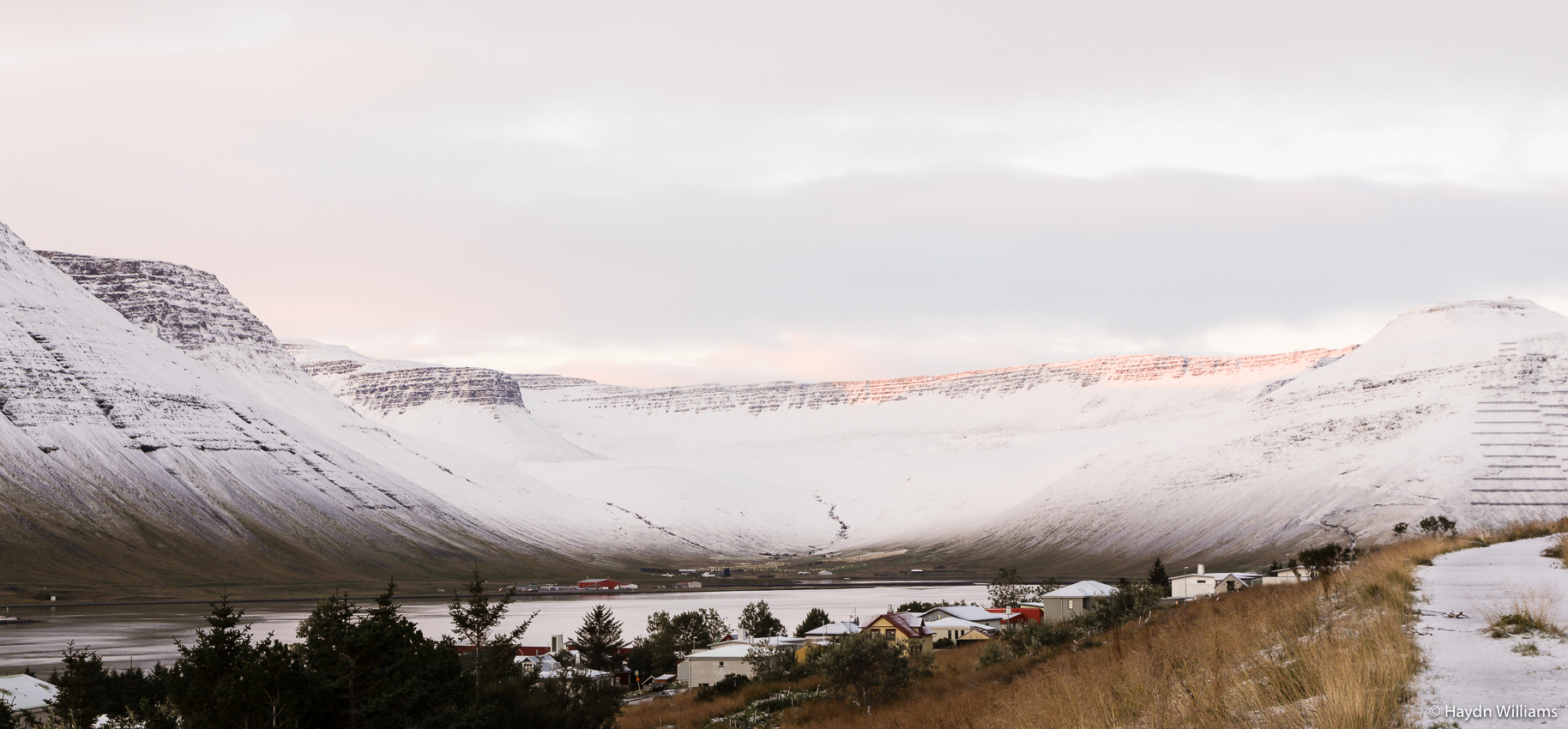
© Haydn Williams 2021

© Haydn Williams 2021
This was quite unseasonal so we hadn’t factored it into our plans at all. Nevertheless, we had to move on to our next accommodation, so set off towards Drangsnes. As the crow flies this isn’t a great distance but the map shows that following the coast means that straight-line distances aren’t of much relevance around here.

The snow didn’t prove too much of a problem on the roads around sea-level, and so after stretching our legs around town we motored for all of 20 minutes before stopping at Seljalandsdalur waterfall. It’s a serious issue with travelling around Iceland – you can’t avoid stopping to look at nice things, no matter how much of a rush you’re in. The waterfall is hidden from view up a sheer deep gorge, only making itself visible when you get up close.

© Haydn Williams 2021

© Haydn Williams 2021

© Haydn Williams 2021
After that we made incredibly fast progress, slowed only by stops to eat lunch, watch some seals, take lots of photos, and do some whale-watching.

© Haydn Williams 2021
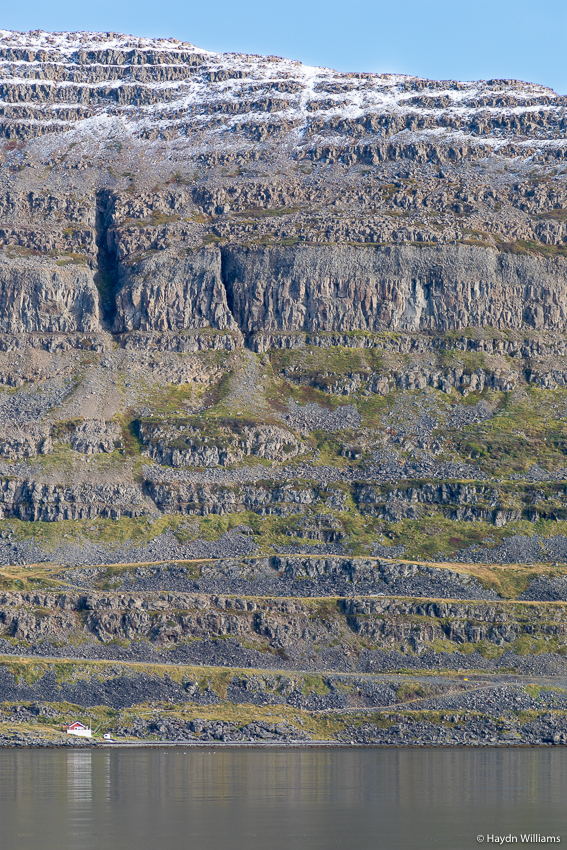
© Haydn Williams 2021

© Haydn Williams 2021

© Haydn Williams 2021
We did eventually reach the eastern end of the Westfjords, and settled into the new accommodation while watching the sky intensely as soon as the sun dropped behind the horizon. With a rare combination of clear skies and a ‘moderate’ aurora forecast, we didn’t want to miss anything. The sky was completely clear, and it was incredibly cold outside as we kept dashing outside to check on progress. They made a brief appearance about nine o’clock, but were clearly feeling shy because they didn’t hang around for very long.

© Haydn Williams 2021
Thursday was a no-travel day, so we struck north along the Strandir coast. Eight-five kilometres of unpaved road squeezed between the sea shore and towering cliffs. In many places these cliffs tower a little less than they used too, and have deposited bits of themselves onto the road. Combined with a couple of quite muddy spots, some very steep drops, and one bit that looked poised to simply slide into the sea at any moment, it was quite exciting.

© Haydn Williams 2021
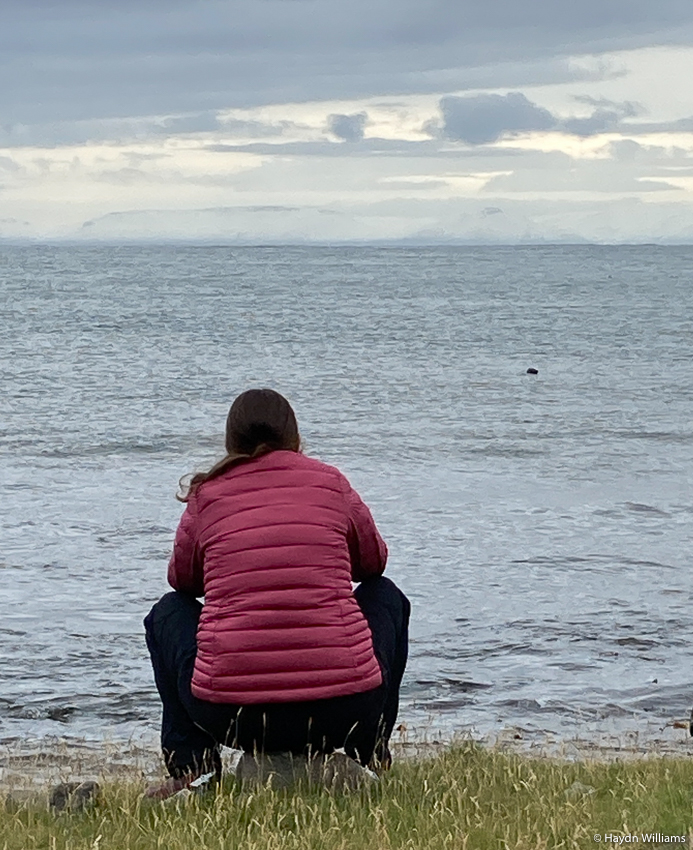
© Haydn Williams 2021
We returned to the cabin, passing some people stood around one of the geothermal springs which are commonly used to produce electricity in Iceland. It turned out to be the owners of our accommodation attempting to fix the mini power station feeding our cottage from the spring, so that meant no heating or electricity for the next two hours. It was soon fixed, though, and we returned to effectively unlimited green heating and hot water again – there’s something very satisfying about knowing you can whack the heating right up without feeling guilty!
From Drangsnes it was a long drive east out of the Westfjords and onwards to Hauganes, a village on the north coast. We re-joined Route 1, the ring road which loops around the entire country. We know from previous experience that this is a two-carraigeway affair, not a massive motorway, with single-lane bridges to be negotiated on a whomever-arrives-first-wins basis. I had, however, expected it to be ploughed and gritted to within an inch of it’s life, as the main thoroughfare around the island. How wrong I would later prove to be. We had a brief dalliance with some snow as we came over the final pass towards Akureyri and Eyjafjörður, but the road itself was actually fine.

© Haydn Williams 2021

© Rebecca Cordell 2021
Our accommodation here was right next to the shore of Eyjafjörður, which is a large fjord known for whale-watching amongst other things. The following day we ignored the forecast of wind and sleet, and travelled north to Siglufjordur, emerging into town from a 7km tunnel to be greeted by… wind and sleet.

© Haydn Williams 2021
Reverting to plan A, we turned tail and headed first back to the cottage for a bit of lunch and some more whale-watching.

© Haydn Williams 2021
After that we continued east to Godafoss, stumbling across other tourists, of whom we’d seen barely any so far.

© Haydn Williams 2021
On our return leg we visited Vaglaskógur, which was very pleasant because Iceland doesn’t have much in the way of trees. It was also chock-full of interesting fungi, and we caught everything just as the autumn colours were coming out.

© Haydn Williams 2021
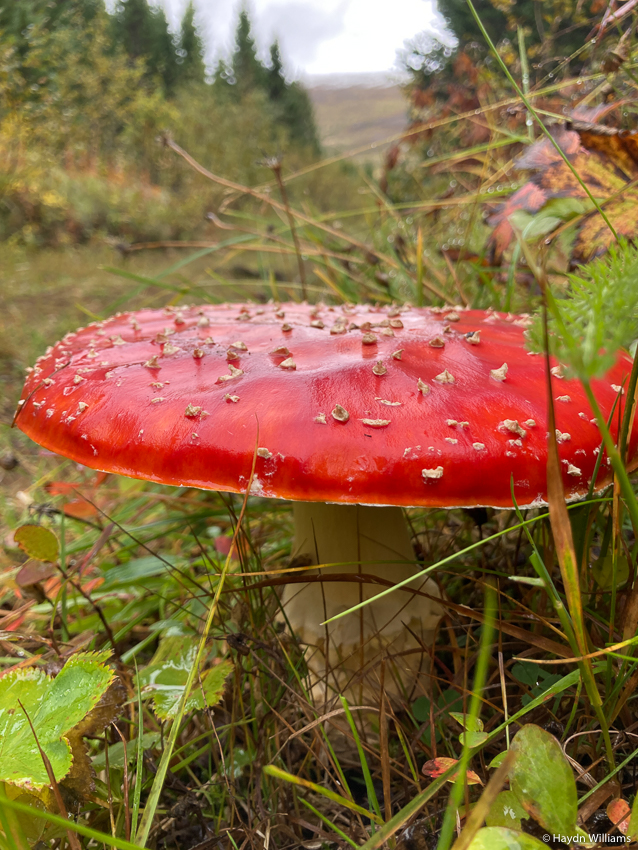
© Haydn Williams 2021
Another travel day followed, with a visit to the Mývatn region first of all. Many geological boxes were ticked, starting with lava pillars and lava fields at Höfði and Dimmuborgir. From there it was onwards to the foot of the Hverfjell crater, where we behaved like OAPs and had a picnic in the car. I did briefly flirt with the idea of climbing it, but a short reconnaissance to the notice board found me absolutely drenched and somewhat windswept.

© Haydn Williams 2021
The final stop was the Grjótagjá cave, as featured in Game of Thrones – it’s the location for that scene with Jon Snow and Igritte. Unfortunately the grim weather meant it was a bit underwhelming. We returned to the cottage and agreed that the sensible option was to go back early the following morning, figuring that the sun would be well-placed to illuminate the interior of the flooded cave and its warm waters.
Our calculation was correct, and the sun was indeed shining beautifully the next day. The only snag was that another storm had come through overnight, and we woke to snow cover and closed roads. By the time the roads were re-opened (and passable) it was about 11am before we could get back to the scene of the previous day’s exploits. Route 1 was by no means clear of snow and ice, and it was quite a tense drive back over the tops of the moorland before we reached Mývatn.
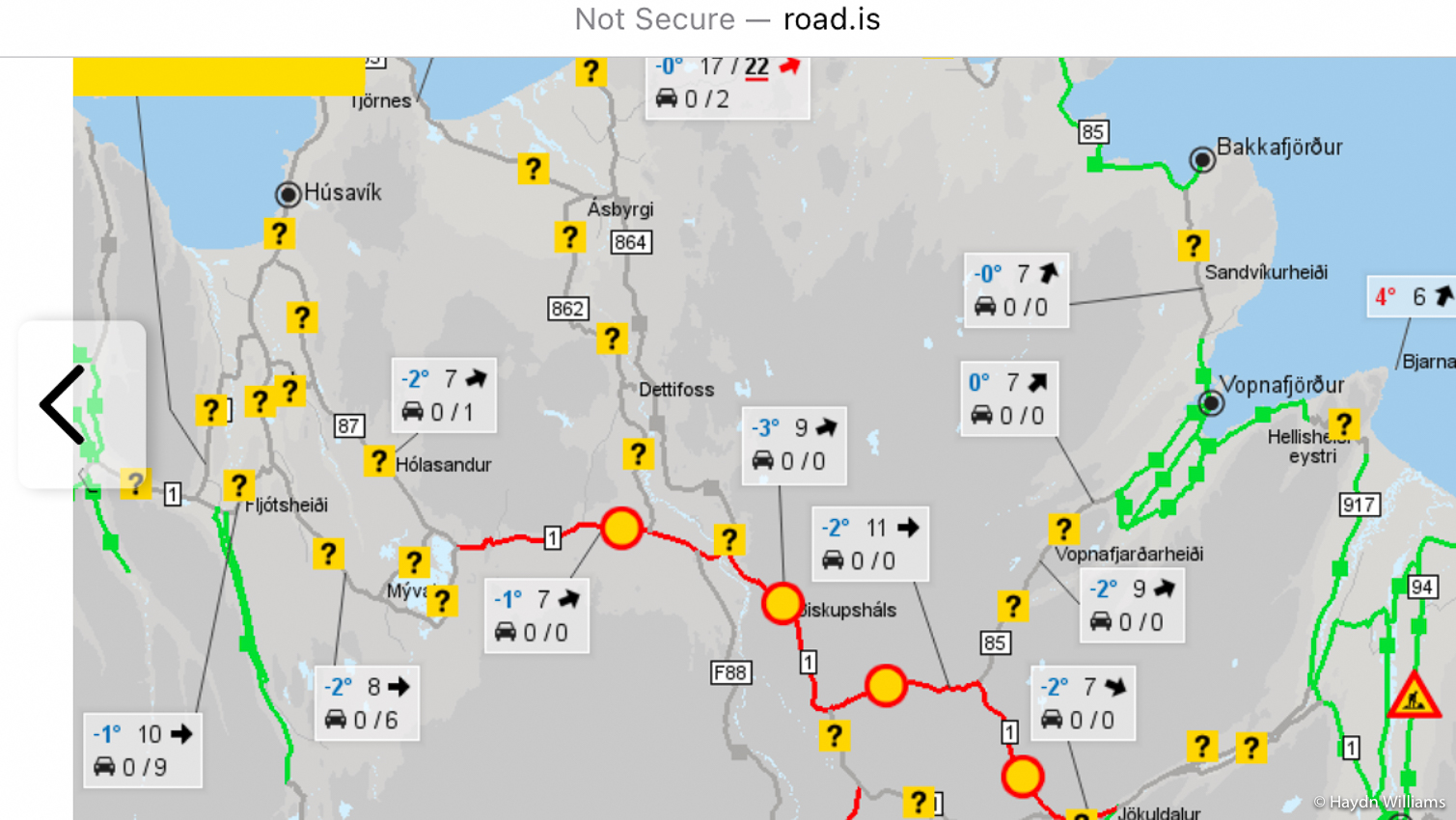
It didn’t matter though, as the sunshine plan worked perfectly. I should point out that the full story of the GoT location turned out to be that it actually just served as inspiration – they built a vaguely-similar version on a sound stage in Belfast to film the actual scene. Less exciting, but the cave is awesome regardless (although thanks to recent volcanic activity is now too hot to bathe in).

© Haydn Williams 2021
Taking advantage of the gorgeous weather, we also climbed the caldera we’d just stared at the day before. The views were spectacular, and continued to drive home the theme of not being able to do justice to Iceland photographically. Nevertheless, we tried!

© Haydn Williams 2021
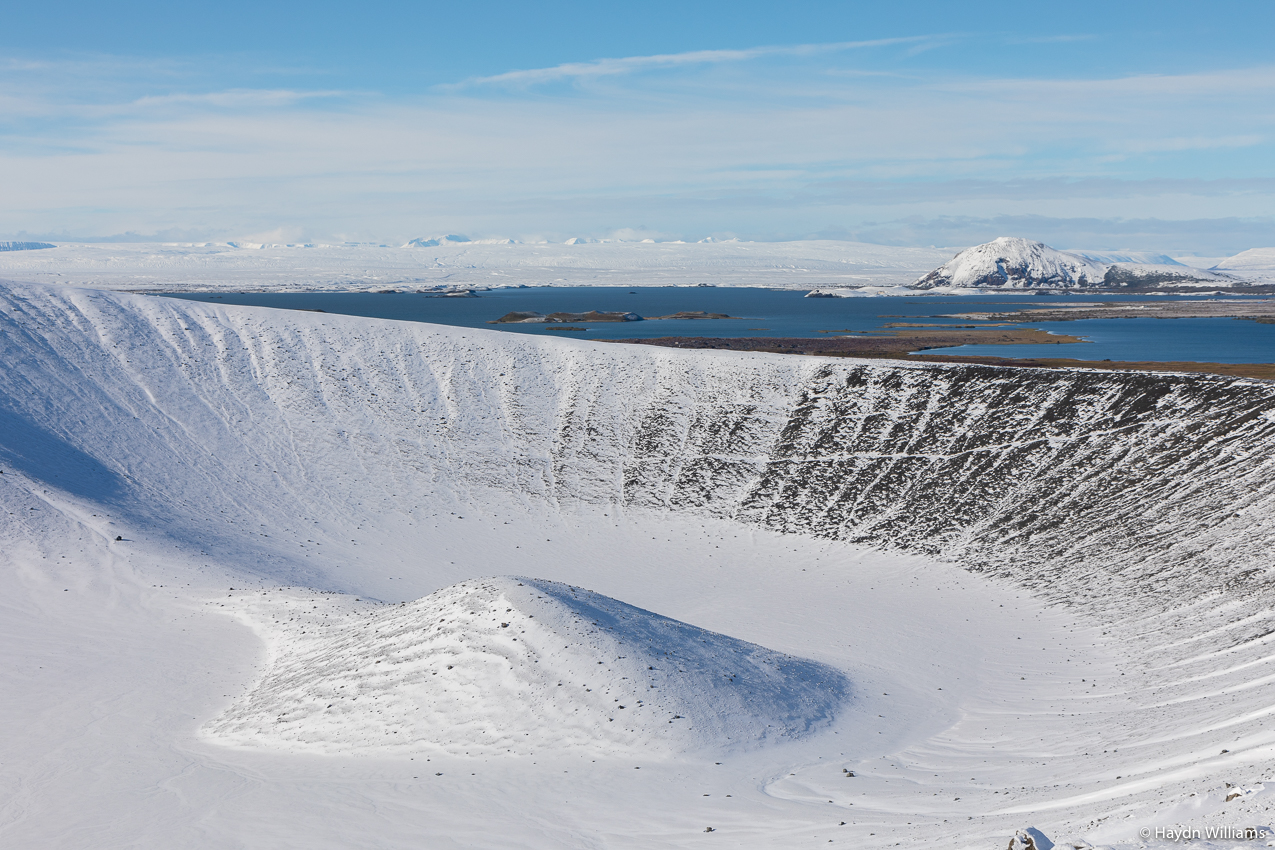
© Haydn Williams 2021
After that it was over to Hverir, for more fumaroles and boiling mud pools.
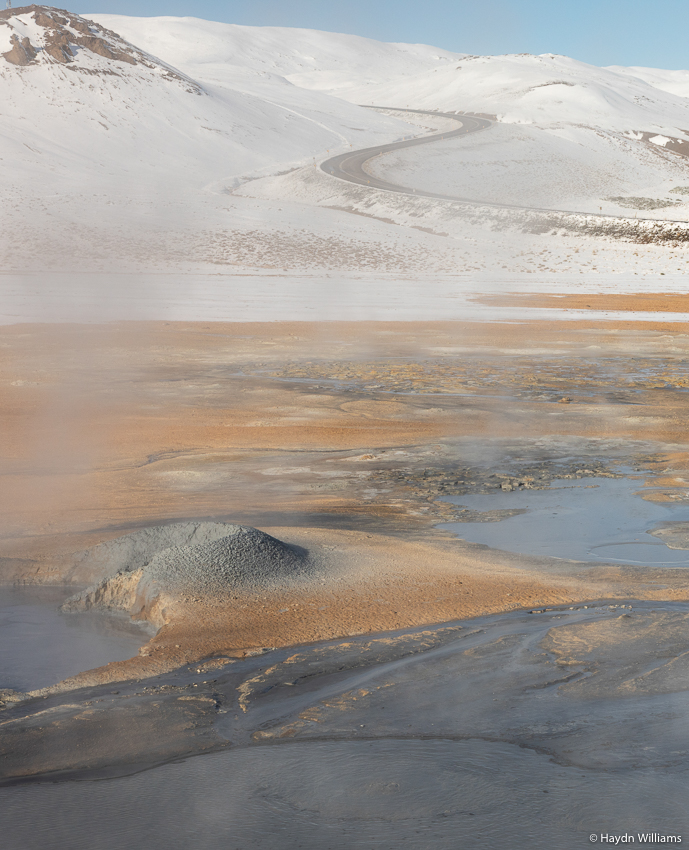
© Haydn Williams 2021
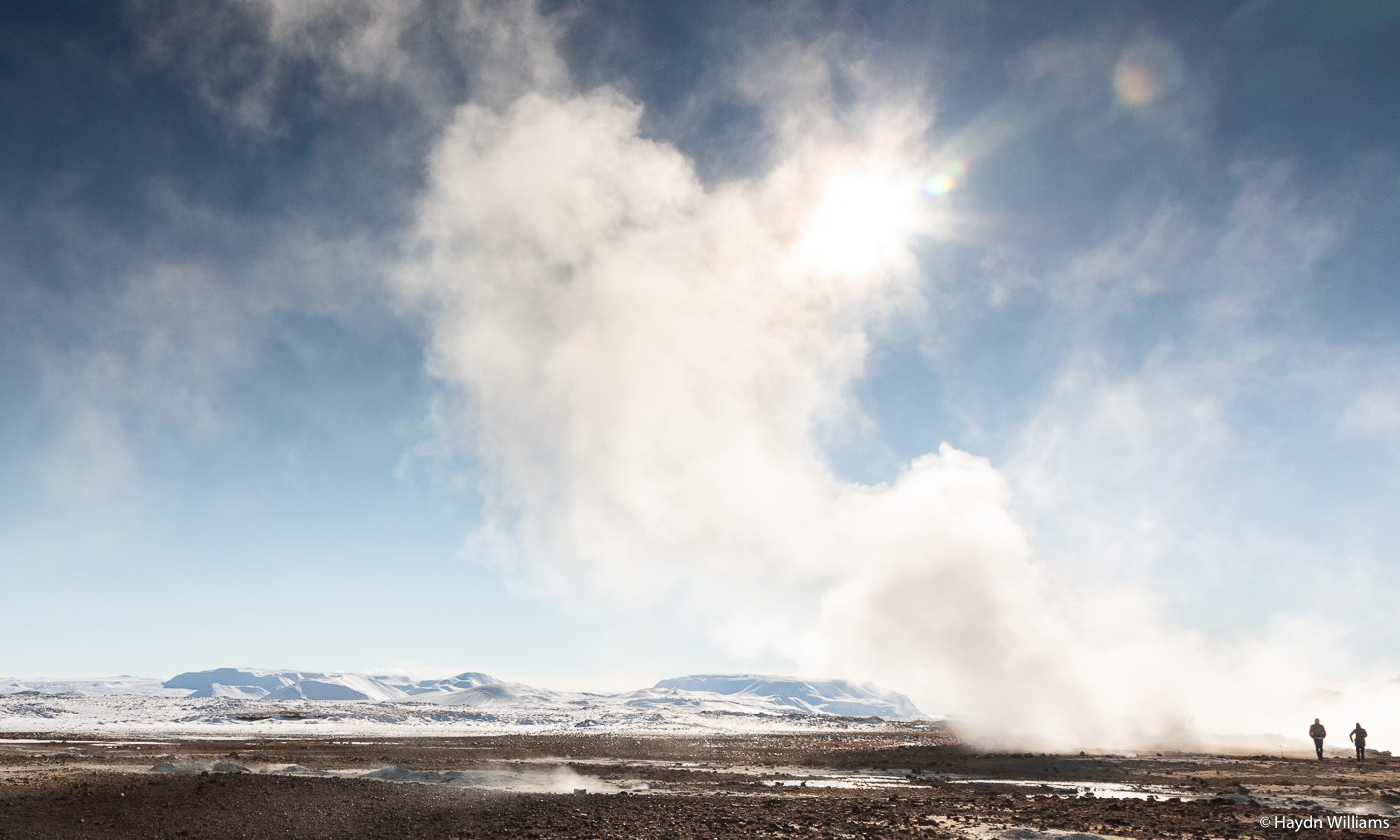
© Haydn Williams 2021
We then travelled north and hit the coast, losing elevation and snow cover but passing through amazing scenery with lovely backdrops of snowy mountains. Massive thanks to Becs for putting up with me pulling the car over every five minutes to take photos, opening the door and letting a freezing gale in in the process.
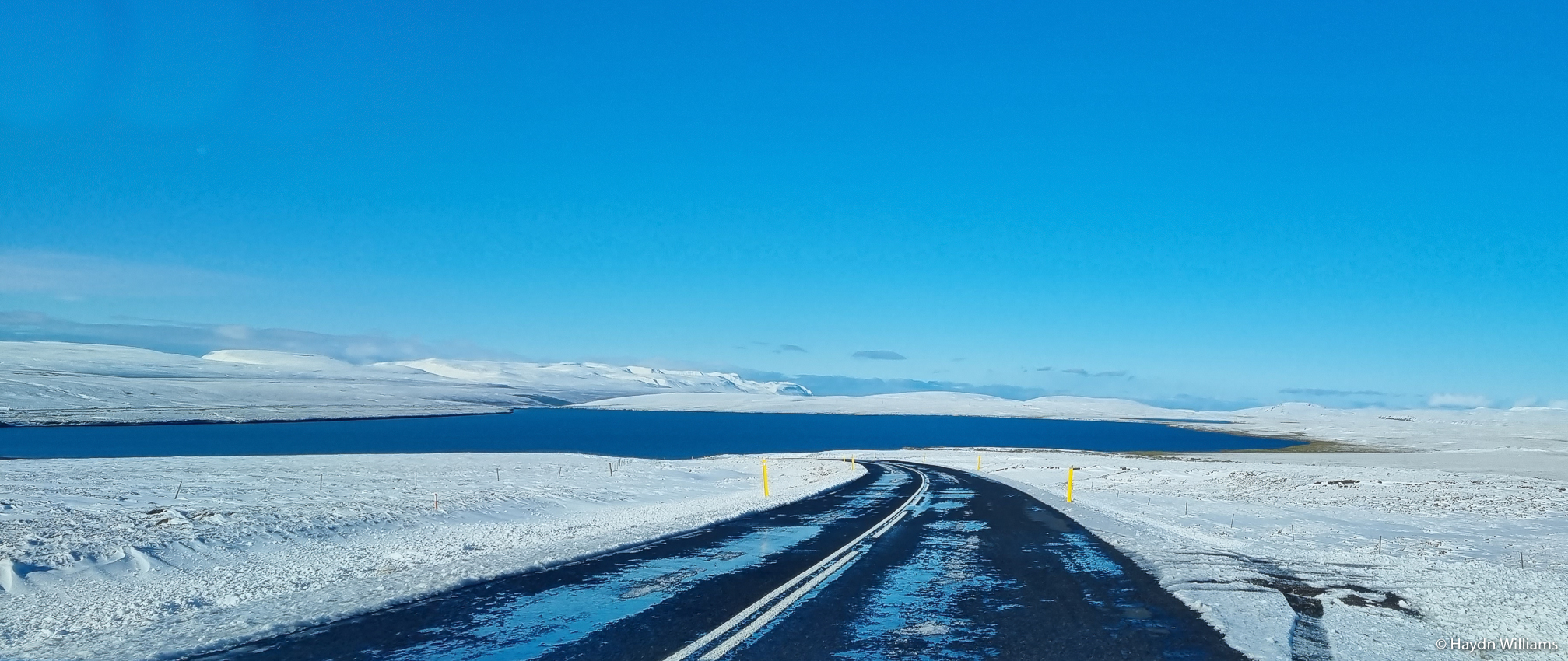
© Haydn Williams 2021

© Haydn Williams 2021
After finding accommodation number five, we went for a wander around the horsehoe-shaped cliffs of Ásbyrgi. Under clear skies and with no-one else around, we had great views of this hoof print left when Odin’s horse Sleipnir touched his foot to the ground (please don’t email me, geologists).
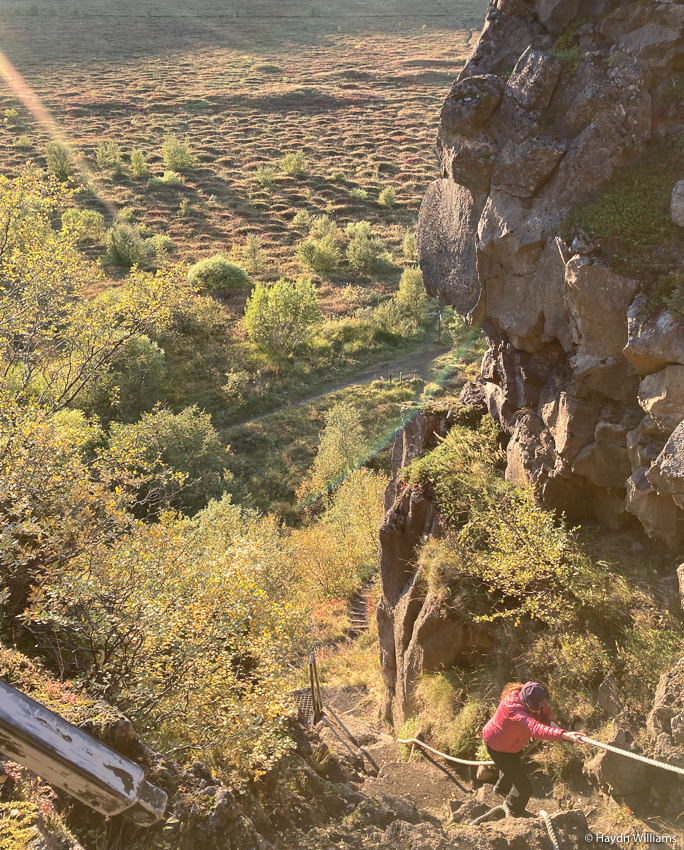
© Haydn Williams 2021

© Haydn Williams 2021
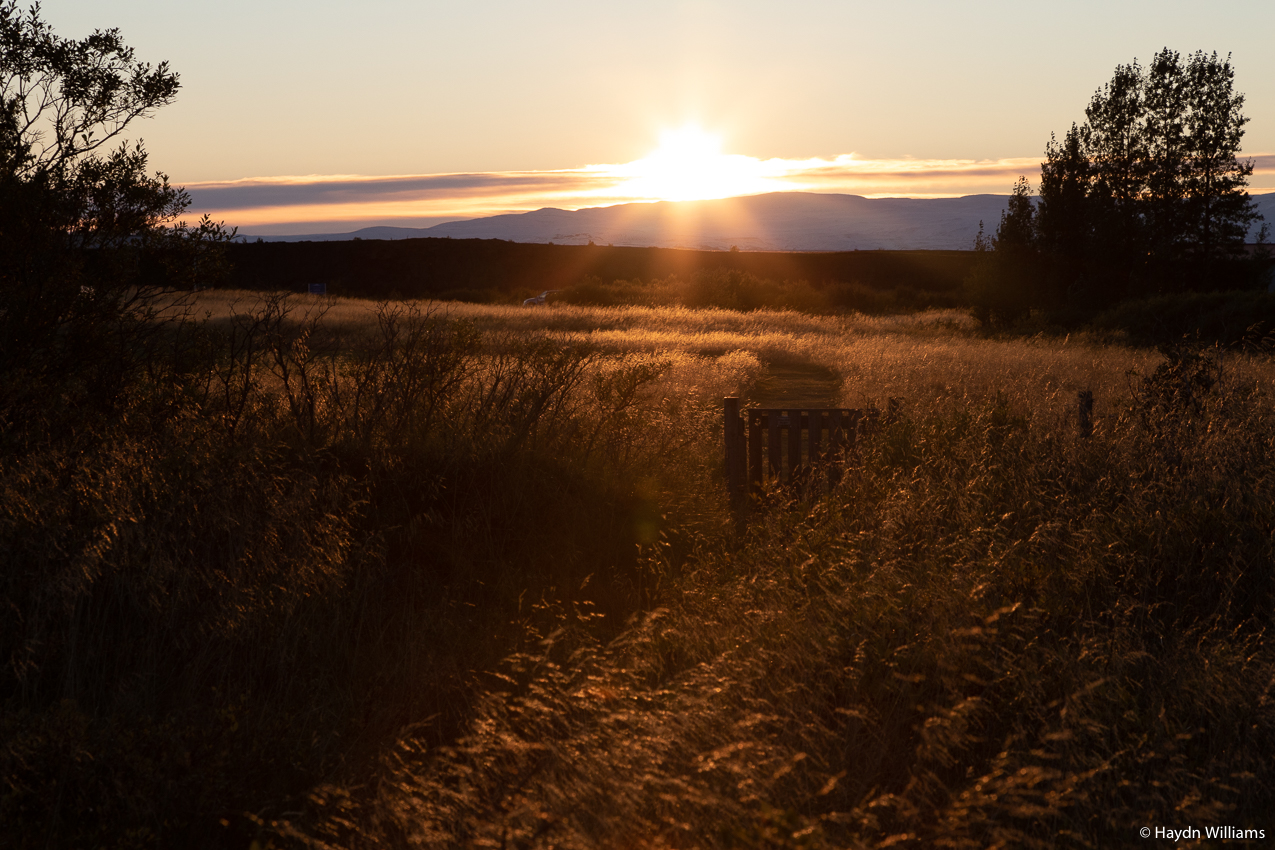
© Haydn Williams 2021

© Haydn Williams 2021
We had big things planned for the next day. The Dettifoss trail runs for 35 km from the waterfall of the same name, down a canyon and more waterfalls, past our accommodation and out to sea. Becs had been training hard for several months, and we’d carted running gear around for the duration of the holiday in anticipation. The weather to date meant that we hadn’t managed to get any other running in, but this was the main event.
Having run into torrential rain in Hawai’i, and rain/floods/snow in New Zealand, we should really have predicted what came next. We were woken by building-shaking winds during the night, greeted by more snow in the morning, and most roads (including both to Dettifoss) were again closed. The weather remained wild for the rest of the day (45mph winds wild), so I dread to think what conditions were like up in the mountains. It was certainly causing mayhem generally, with Icelandic rescue teams receiving over 100 callouts in the north and west of the country. We eventually got out for a short walk about 4PM, by which point the sky were starting to clear. After a lazy day it was ‘action stations’ around 10PM, as the northern lights made another brief appearance.
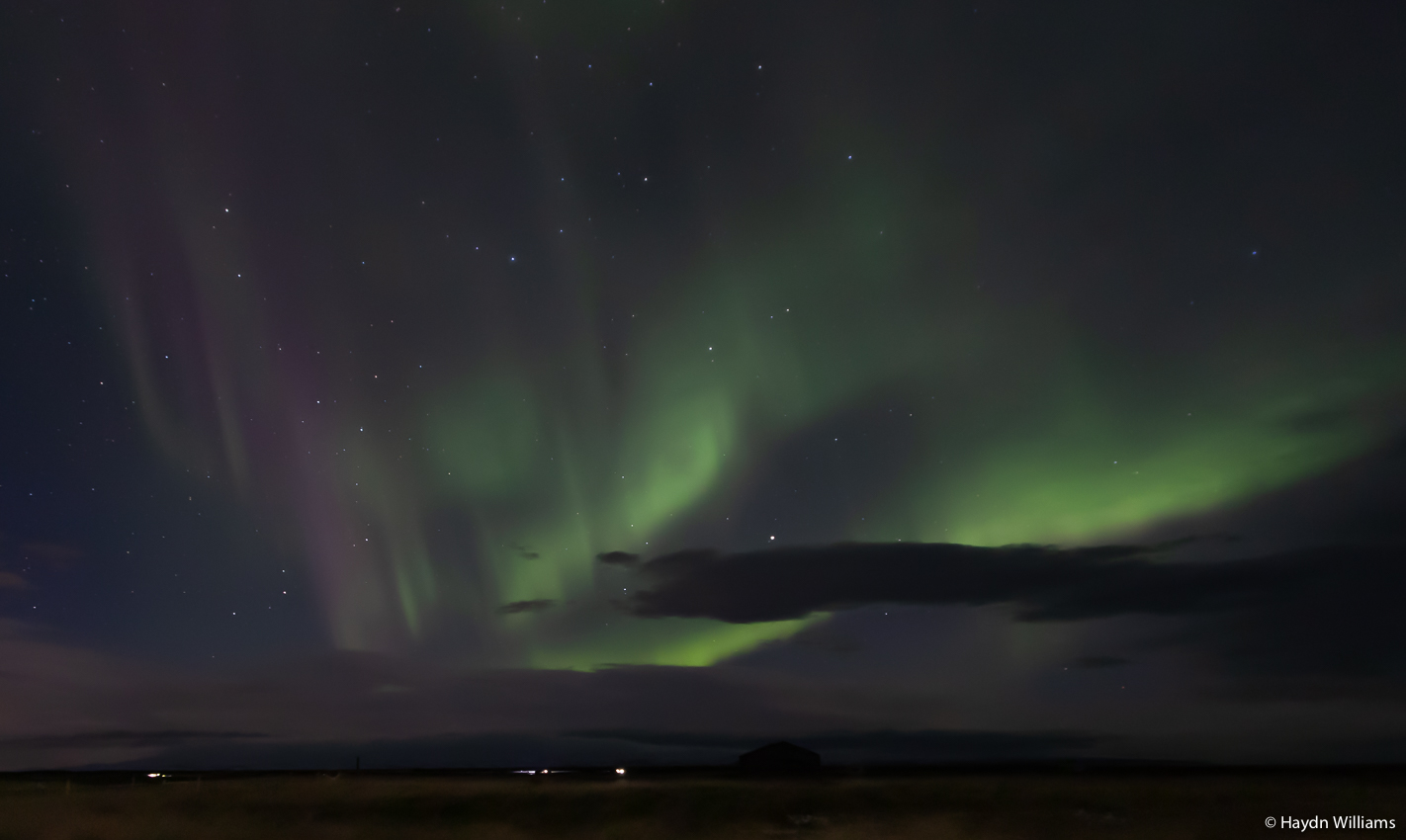
© Haydn Williams 2021
All that remained was a leisurely drive back to Akureyri airport the next morning, then a flight back to Reykjavik. It was made more leisurely by Icelandair cancelling our flight, so there was plenty of opportunity to take some final photos.
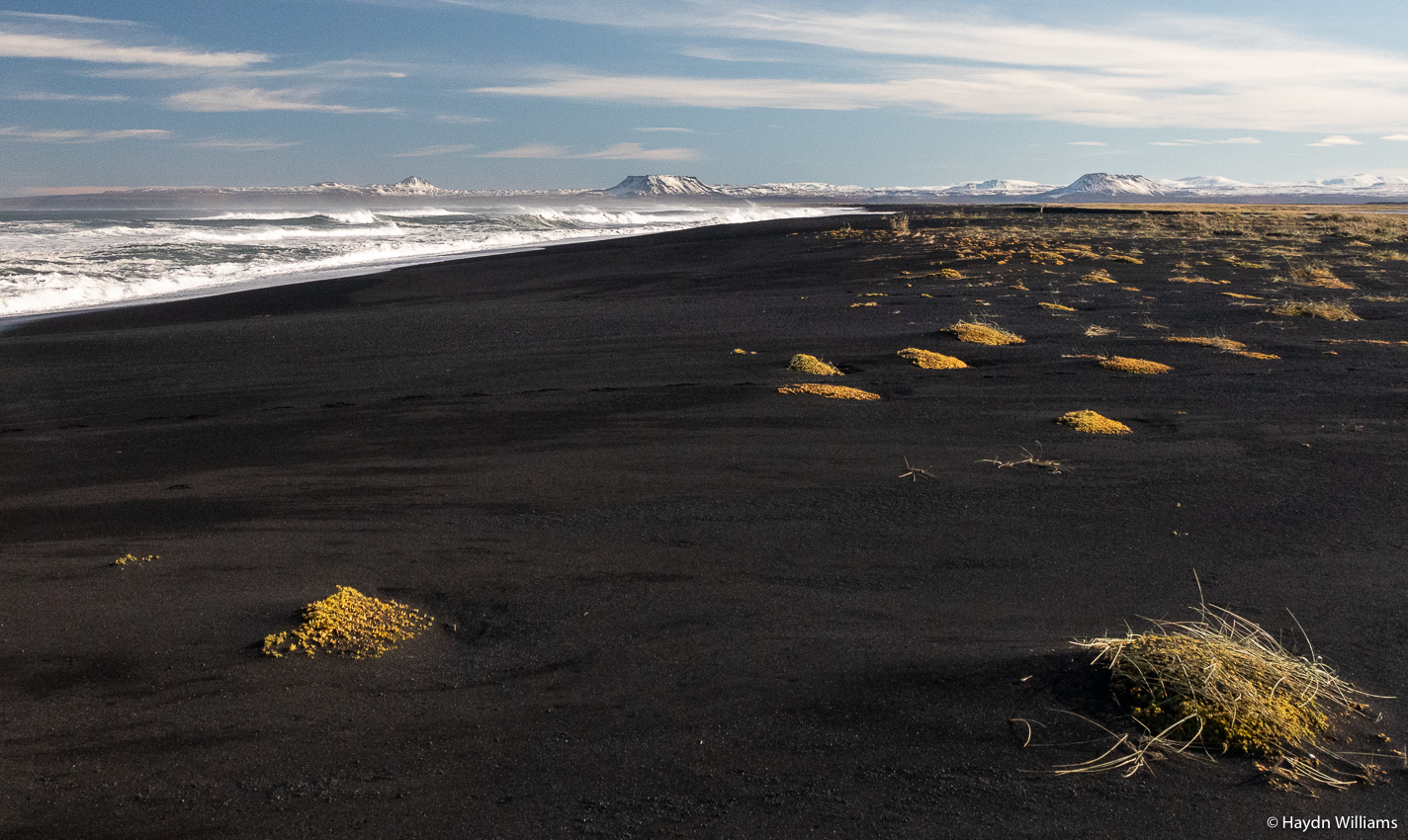
© Haydn Williams 2021

© Haydn Williams 2021
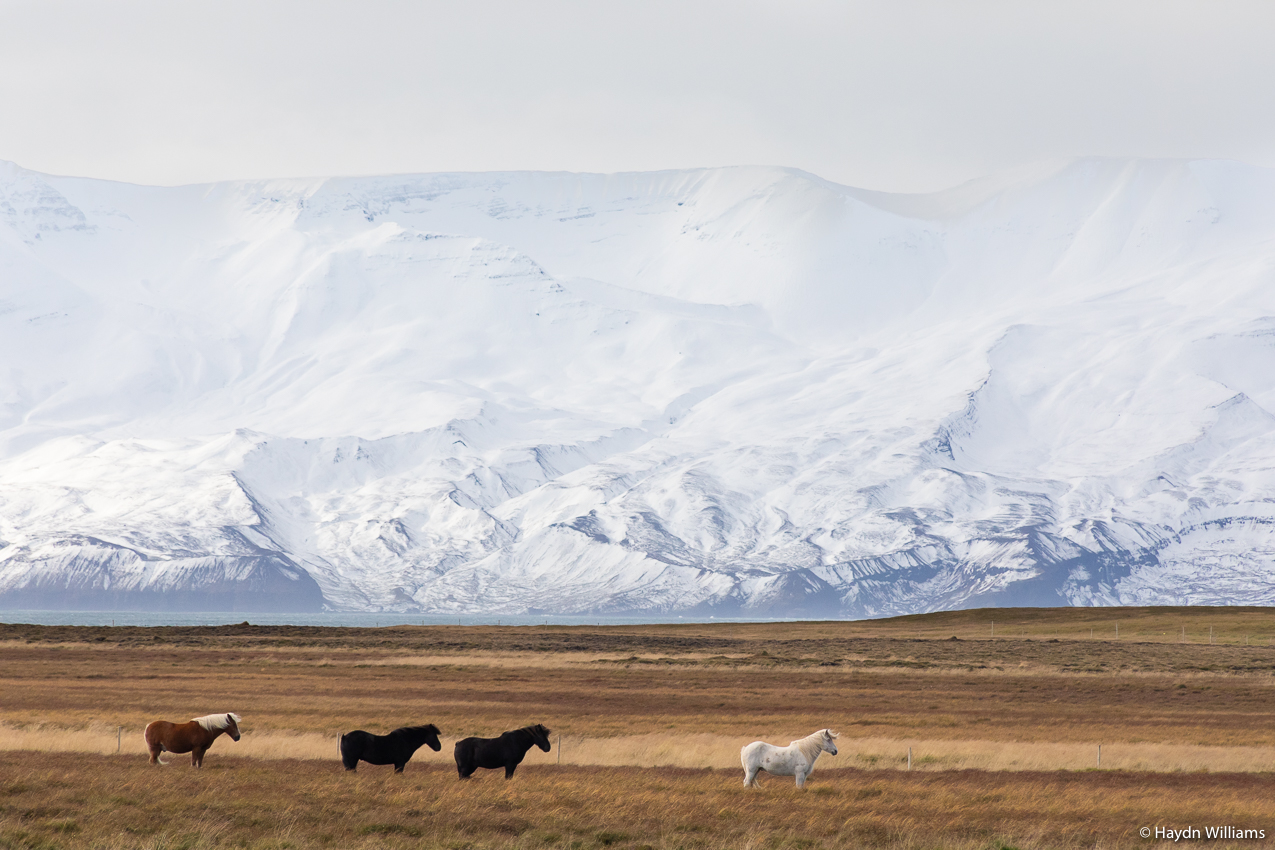
© Haydn Williams 2021
So there we go. The lack of volcano and of any running wasn’t quite what we had planned, but the early snow certainly livened up the driving and I’m not sure it could have looked any more impressive. Long-time readers will know how much I love snow, so this definitely counted as a win. Once again Iceland didn’t disappoint, and it’s a good excuse for a comeback tour some time in the future.